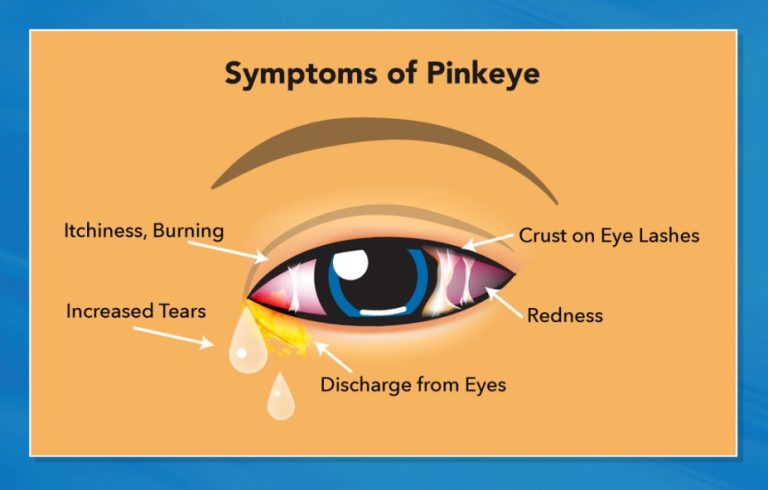Conjunctivitis also popularly referred to as “APOLLO or PINK EYE“ is an inflammation or swelling of the CONJUNCTIVA, a thin transparent layer of tissue that lines the inner surface of the eyelid and covers the white part of the eye.
HOW DANGEROUS IS A PINK EYE DISEASE?
Conjunctivitis is a common eye disease, especially in children. It may affect one or both eyes. Some forms of conjunctivitis are highly contagious and can easily spread in schools and at home. While conjunctivitis is usually a minor eye infection, sometimes it can develop into a more serious problem.
A viral or bacterial infection can cause conjunctivitis. It can also develop due to an allergic reaction to air irritants such as pollen and smoke, chlorine in swimming pools, ingredients in cosmetics, or other products that contact the eyes, such as contact lenses. Sexually transmitted diseases like chlamydia and gonorrhea are less common causes of conjunctivitis.
WHAT ARE THE SYMPTOMS?
A gritty feeling (sand like) in one or both eyes
Itching or burning sensation in one or both eyes
Excessive tearing or watery eye
Discharge from one or both eyes
Swollen eyelid
Pink discoloration to the whites of one or both eyes
Increased sensitivity to light
TYPES AND CAUSES OF CONJUNCTIVITIS
There are basically three main types of conjunctivitis: Allergic, Infectious and Chemical. The cause of conjunctivitis varies depending on the type.
Allergic Conjunctivitis
• Allergic conjunctivitis occurs more commonly among people who already have seasonal allergies. They develop it when they come into contact with a substance that triggers an allergic reaction in their eyes.
• Giant papillary conjunctivitis is a type of allergic conjunctivitis caused by the chronic presence of a foreign body in the eye. People who wear hard or rigid contact lenses, wear soft contact lenses that are not replaced frequently, have an exposed suture on the surface of the eye or have a prosthetic eye are more likely to develop this form of conjunctivitis.
Infectious Conjunctivitis
This could either be bacterial or viral.
• Bacterial conjunctivitis is an infection most often caused by bacteria. Examples are physical contact with other people, poor hygiene (touching the eye with unclean hands) or using contaminated eye makeup and facial lotions can also cause the infection. Sharing makeup and wearing contact lenses that are not your own or are improperly cleaned can also cause bacterial conjunctivitis.
• Viral conjunctivitis is most commonly caused by contagious viruses associated with the common cold. It can develop through exposure to the coughing or sneezing of someone with an upper respiratory tract infection. Viral conjunctivitis can also occur as the virus spreads along the body’s own mucous membranes, which connect the lungs, throat, nose, tear ducts and conjunctiva. Since the tears drain into the nasal passageway, forceful nose blowing can cause a virus to move from the respiratory system to the eyes.
TREATMENT OF CONJUNCTIVITIS
Treating conjunctivitis has three main goals:
– Increase patient comfort.
– Reduce or lessen the course of the infection or inflammation.
– Prevent the spread of the infection in contagious forms of conjunctivitis.
The appropriate treatment for conjunctivitis depends on its cause. Patients are advised to see an eye doctor diagnose and recommend a proper treatment.
PREVENTING THE SPREAD OF CONJUNCTIVITIS
Practicing good hygiene is the best way to control the spread of conjunctivitis. Once an infection has been diagnosed, follow these steps:
•Do not touch your eyes with your hands.
•Wash your hands thoroughly and frequently.
•Change your towel and washcloth daily, and don’t share them with others.
•Discard eye cosmetics, particularly mascara.
•Don’t use anyone else’s eye cosmetics or personal eye-care items.
•Follow your eye doctor’s instructions on proper contact lens care.
You can soothe the discomfort of viral or bacterial conjunctivitis by applying warm compresses to your affected eye or eyes. To make a compress, soak a clean cloth in warm water and wring it out before applying it gently to your closed eyelids.
For allergic conjunctivitis, avoid rubbing your eyes. Instead of warm compresses, use cool compresses to soothe your eyes. Over-the-counter eye drops might also help. Antihistamine eye drops can alleviate the symptoms, and lubricating eye drops can rinse the allergen off the surface of the eye.







